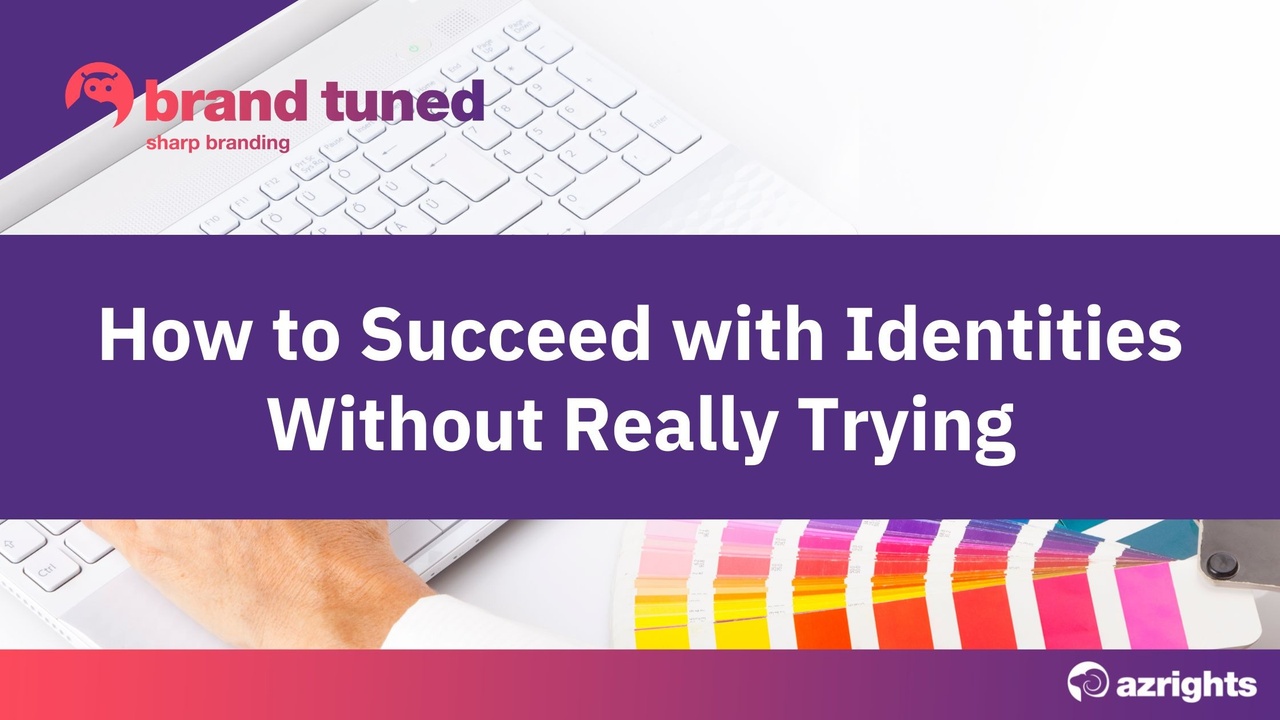How to Succeed with Identities Without Really Trying
Oct 27, 2022
When designing a brand identity, the less fuzzy, magical, mystical the process the better.
This week’s podcast with Sean Adams starts with a mini masterclass on creating winning identities. Sean is an internationally recognized graphic designer, and chair of graphic design at Art Center College of Design in California. He recommends taking clients on the design journey, showing them iterations of the work as it progresses, rather than doing a big reveal at the end of the design process.
I liked the importance Sean places on clients understanding the process. They should know why designers make the choices they make so it's less of a surprise to them.
People often have questions and need to be educated. They need to understand what works and what doesn't when it comes to identity design. For example, while meaningful imagery, such as a picture of books in a logo for a library, may seem appropriate to some people, they need to know why it’s not a good approach to identity design.
Had IBM used a picture of an adding machine in its logo how suitable would its visual identity have been by now?
Such a descriptive identity design would need a complete overhaul a few years down the line, which is not a desirable approach to brand identity design.
This was a revelation to me because I hadn’t realised that people make this same mistake about visual elements as they do with names and taglines. I often find that people are inclined to choose descriptive, meaningful names, which is the opposite of what they should do to be distinctive.
Just as descriptive designs are not the right approach to identifiers, so descriptive names are the wrong approach to naming.
Given that visual identity is the face of the business, I’m often baffled as to why designers radically change the visual identity of established businesses just because the business’ strategy changes. Tweaks to the identity should be all that’s needed. That is, unless there is something radically transformed about the business strategy. For example, say it decides to be premium instead of low cost. Otherwise, I doubt a totally new identity is ever desirable for an established business.
Branding as a concept originates from the days when livestock had numbers burnt onto their skin to identify who they belonged to. So, by analogy, when a business is designed its identifying marks need to be treated as permanent once a business is beyond the early stages.
From an IP perspective, it isn’t a good idea to radically change the identity just for change’s sake because a business would have trademark registrations in place. Changes to its identifying elements would necessitate new trademark registrations worldwide – which can be an expensive exercise.
I suspect more companies would be memorable due to their visual identity if it wasn’t so common for them to change their identity.
However, often business owners get bored with their identity designs and actively look to change them every so often. Yet businesses would do well to leave their designs unchanged. They see their own designs day in and day out. Their customers will only occasionally see the branding. The visual identity is what makes it is easier for customers to remember and recognise a brand.
Often people recognise brands by their name or an identifier even though they don't know a lot about the brand. So, it’s not a good idea to change the identifying elements that characterise a business once a business is established.
Changing the identity radically is the equivalent of a person having extensive plastic surgery and becoming unrecognisable to people who know them.
As this is a question that fascinates me I broached the subject of changing the visual identity with Sean during the interview. Listen to the episode to find out what Sean had to say on the subject.
An interesting insight I got from the interview is that a good logo will always pose a question. For example, the Apple identity has that little bite out of it, which forces you to think a little bit. The more you think, the more it sticks in your head.
It takes time for companies to stick in the mind and to be associated with an identifying element. For example, McDonalds can now use its golden arches M symbol on its own without the McDonalds name and be recognised. A brand can only do that once it has enough brand equity in its identifiers to be able to pull that off.
And as I’m at pains to explain whenever I get the chance, fame alone is not enough. It’s essential that the brand strategy focuses on what steps to take to own its identifiers. That’s necessary because it’s important to keep identifiers unique to the brand.
The Brand Tuned program is a 101 on branding that includes much needed education in intellectual property. The next cohort starts in January. Why not register to attend the upcoming webinar to find out more about it?
During the mini masterclass Sean also mentioned the importance of looking at the competition and their color systems to try to figure out how to design something different. To stand out you're going to have to maybe go away from what everyone else is doing he said. And that is the point - to not blend in, in any way.
Listen to the podcast to find out what steps to take to successfully set your business apart from the crowd, so you are on top and resonate.

